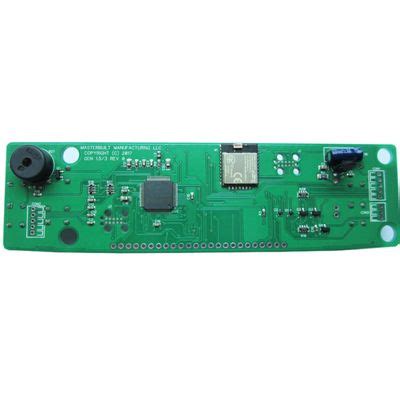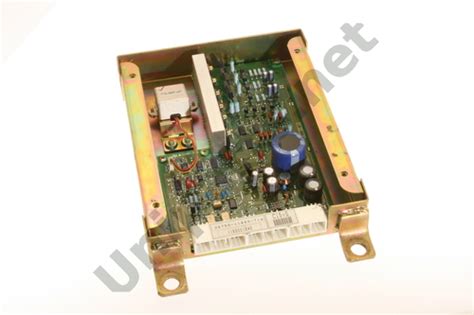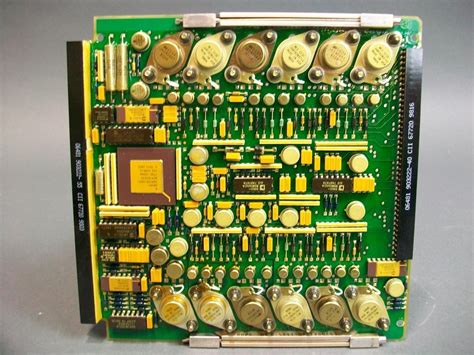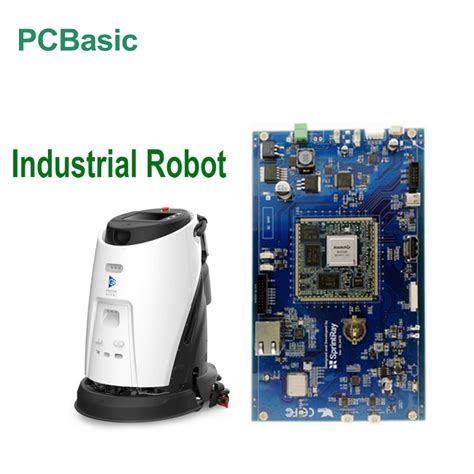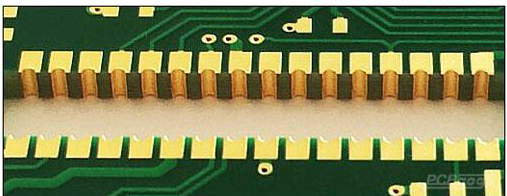Unleashing Innovation: The Future of Custom Electronic Assembly
Key Takeaways
The custom electronic assembly landscape has undergone significant transformation, emphasizing the vital role of pcb assembly and pcba in modern manufacturing. Key technologies such as surface mount technology (SMT) and through-hole technology have enhanced the efficiency and flexibility of these processes. As industries increasingly adopt automation in custom electronic assembly, the integration of robotics and AI-driven solutions has streamlined production lines, allowing for faster turnaround times and decreased labor costs. Innovative strategies, including lean manufacturing principles, have been adopted to optimize workflows, minimize waste, and ensure that production meets evolving market demands. Furthermore, maintaining high-quality standards is paramount; implementing best practices like rigorous testing protocols ensures product reliability in every step of pcba creation. Looking ahead, sustainability will play a crucial role in shaping future trends in electronics manufacturing. By addressing challenges such as material sourcing and waste management, companies can forge a path toward more environmentally friendly practices while enhancing their operational efficiency. In summary, the evolution of custom electronic assembly is driven by a combination of technology advancements and innovative methodologies that not only enhance product quality but also prepare the industry for a sustainable future.
The Evolution of Custom Electronic Assembly: A Historical Perspective
The journey of custom electronic assembly has been marked by significant progress and adaptation, reflecting the rapid advancements in technology and the growing demands of the electronics market. Initially, pcb assembly processes were labor-intensive and manual, often resulting in inconsistent product quality. However, as industries began to embrace automation, techniques such as surface-mount technology (SMT) emerged, drastically enhancing the efficiency of pcba—which is a pivotal component in modern electronics manufacturing.
Over the decades, we have witnessed the integration of innovative strategies, such as modularization and lean manufacturing practices, which not only streamline production but also minimize waste. The evolution is further underscored by the advent of sophisticated software that plays a crucial role in custom electronic assembly—ensuring that design specifications are met with precision.
“Embracing change is key to staying competitive in today’s fast-paced electronics landscape.”
As companies continue to invest in research and development for advanced materials and components, it remains clear that the landscape of pcb assembly will keep transforming. Innovation is not just a trend but a necessity for sustaining quality and meeting consumer demands in this dynamic field. In summary, understanding this historical perspective illuminates how far we have come and sets the stage for future advancements in custom electronic assembly practices.
Key Technologies Revolutionizing Custom Electronic Assembly
In the rapidly advancing arena of custom electronic assembly, a multitude of key technologies is reshaping the landscape and driving innovation. One significant aspect is the integration of surface mount technology (SMT), which has revolutionized the way components are mounted on printed circuit boards (PCB). This method allows for a more compact design and higher density of components, ultimately enhancing the efficiency of pcb assembly processes. Equally important is the advent of advanced automation techniques, which streamline operations and reduce human error in assembly tasks. Automated optical inspection (AOI) systems play a crucial role in maintaining high product quality by inspecting components on-the-fly, ensuring that any potential defects are caught early in production.
Furthermore, machine learning algorithms are being utilized to optimize supply chain logistics and predictive maintenance for assembly equipment. This not only improves operational efficiency but also contributes to lower production costs. Moreover, emerging materials such as flexible substrates and high-density interconnects are paving the way for innovative designs that meet the demands of modern electronics. As these technologies converge, they not only enhance productivity and product quality but also set a new standard for how pcba deals with the complexities of contemporary electronic assemblies.
Additionally, 3D printing technology has started to infiltrate the domain of custom electronics as it allows for rapid prototyping and customization that were once deemed impractical. This capability encourages designers to explore previously unfeasible ideas without incurring significant costs or time delays. As we look towards the future, it’s evident that these advancements will continue to transform custom electronic assembly into a more flexible, efficient, and innovative process—a critical evolution as industries increasingly rely on sophisticated electronic solutions tailored to their unique needs.
Efficiency Boost: Innovative Strategies in Electronics Manufacturing
In the rapidly evolving field of custom electronic assembly, efficiency is paramount. Manufacturers are increasingly adopting innovative strategies to enhance their pcb assembly processes, thereby improving overall productivity. One key approach involves the integration of advanced automation technologies, which streamline pcba production lines and minimize human error. This not only accelerates assembly times but also allows for greater precision in the manufacturing process. Additionally, utilizing real-time data analytics helps identify bottlenecks and inefficiencies within the custom electronic assembly workflow, enabling quick adjustments to optimize operations. Furthermore, enhancing collaboration among teams through digital platforms ensures that communication gaps are bridged, which is crucial for maintaining smooth operations. The focus on lean manufacturing principles also plays a significant role in this efficiency boost, as companies strive to reduce waste while maximizing resource utilization. With a combination of these innovative strategies, manufacturers can not only elevate their operational efficiency but also meet the growing demands for high-quality electronic products in today’s competitive market.
Ensuring Quality in Custom Electronic Assembly: Best Practices
In the fast-paced realm of custom electronic assembly, ensuring the quality of pcb assembly processes is essential to meet both client expectations and regulatory standards. A robust quality management system forms the backbone of this endeavor, incorporating rigorous testing protocols throughout the pcba lifecycle. Notably, implementing automated inspection technologies, such as Automated Optical Inspection (AOI) and X-ray inspection, can significantly enhance defect detection rates.
The table below outlines some best practices that can contribute to superior quality in custom electronic assembly:
| Best Practice | Description |
|---|---|
| Standardized Operating Procedures | Establish clear protocols for each step of the assembly process to minimize errors. |
| Employee Training | Regular training sessions ensure that all personnel are up to date with current techniques and technologies. |
| Incoming Component Inspection | Inspect materials and components upon arrival to prevent defects from entering the production line. |
| Real-time Monitoring Systems | Utilizing IoT-enabled devices allows for continuous monitoring of processes, facilitating quick interventions when anomalies are detected. |
| Comprehensive Documentation | Maintaining detailed records of production and testing can help trace issues back to their source quickly. |
Incorporating these practices not only improves overall product quality, but also fosters a culture of continuous improvement within organizations engaged in custom electronic assembly. By prioritizing quality at every stage—from initial design through final testing—businesses can effectively enhance their reputation while contributing to a more reliable electronics manufacturing landscape.
Future Trends in Custom Electronics: What to Expect
As the industry continues to evolve, custom electronic assembly is poised for groundbreaking transformations that will redefine how products are designed and manufactured. One of the most significant trends on the horizon is the increasing reliance on automation in pcb assembly processes. Automation not only accelerates production but also minimizes human error, thereby enhancing overall efficiency. Additionally, the integration of advanced technologies such as artificial intelligence and machine learning in pcba processes enables manufacturers to analyze data more effectively, leading to smarter decision-making and optimized workflows.
Another trend gaining momentum is the shift towards modularity in electronic design. This approach allows for flexible configurations of components, making upgrades easier and more cost-effective over time. Alongside modularity, sustainability has become a critical focus; manufacturers are exploring eco-friendly materials and practices that not only reduce waste but also meet growing consumer demand for environmentally responsible products.
As we look ahead, embracing these emerging trends will be crucial for organizations involved in custom electronic assembly. The intersection of innovation and tradition will create a dynamic landscape where adaptability and forward-thinking strategies drive success in the ever-competitive field of electronics manufacturing.
The Role of Automation in Transforming Electronic Assembly Processes
In recent years, automation has emerged as a fundamental driver in the transformation of electronic assembly processes, particularly within the realm of custom electronic assembly. The integration of advanced technologies such as robotics, artificial intelligence, and machine learning has significantly optimized pcb assembly, enhancing speed and accuracy while reducing costs. Through the utilization of automated systems, manufacturers can streamline operations, enabling real-time data collection and analysis that supports quicker decision-making. This shift towards automation not only improves the efficiency of pcba processes but also elevates product quality by minimizing human error, fostering a higher standard in manufacturing precision. Furthermore, automated platforms facilitate the seamless adaptation to new designs and production methods, allowing businesses to remain competitive in a fast-paced market. As automation continues to advance, its role in reshaping the landscape of custom electronic assembly will be pivotal—enabling companies to innovate while meeting the growing demands for higher quality electronics at lower costs.
Sustainability in Custom Electronic Assembly: Challenges and Solutions
The landscape of custom electronic assembly is rapidly evolving, driven by the necessity for sustainable practices that minimize environmental impact while maintaining efficiency. One of the primary challenges in this area is the management of electronic waste, particularly in processes like pcb assembly and pcba. As the demand for high-quality electronics continues to rise, manufacturers are compelled to identify strategies that not only enhance productivity but also adhere to environmental regulations. Implementing sustainable materials in the supply chain presents a vital opportunity; using recyclable components can significantly reduce waste generated during production. Additionally, optimizing energy consumption during manufacturing processes is crucial for minimizing the carbon footprint associated with custom electronic assembly. This may include integrating energy-efficient machinery and utilizing renewable energy sources where feasible. Companies must also invest in training their workforce on sustainable practices to foster a culture of environmental responsibility. By addressing these challenges with innovative solutions, the industry can move towards a more sustainable future without compromising on quality or efficiency, ultimately transforming conventional practices into a paradigm that values both economic viability and environmental stewardship.
Case Studies: Successful Implementations of Custom Electronic Assembly Strategies
In recent years, numerous companies have showcased successful implementations of custom electronic assembly strategies, demonstrating the efficacy of these methods in enhancing operational efficiency and product quality. For instance, a leading manufacturer in the telecommunications sector adopted an innovative pcb assembly technique that streamlined their production line. By integrating advanced automation tools, they were able to reduce assembly times significantly and minimize manual errors. This not only led to cost savings but also improved the overall reliability of their products.
Another notable case involved a consumer electronics company that utilized pcba services to develop a novel smart device. By leveraging innovative design strategies and high-precision manufacturing processes, they successfully launched a device that exceeded industry standards for performance and durability. Their strategic partnership with specialized firms in custom electronic assembly allowed them to quickly adapt to market demands and implement design changes on-the-fly.
These examples highlight how the integration of cutting-edge technology and innovative practices within custom electronic assembly can drive significant advancements across various industries, shaping the future landscape of electronics manufacturing.
Conclusion
The future of custom electronic assembly is poised for remarkable advancements that will redefine the landscape of electronic manufacturing. As industries continue to embrace pcb assembly and pcba solutions, the integration of cutting-edge technologies such as automation, artificial intelligence, and machine learning will drive significant efficiency gains. Innovative strategies focusing on real-time data analytics and predictive maintenance are enhancing operational workflows, reducing downtime, and ensuring optimal quality control. Moreover, sustainability considerations are becoming increasingly critical; companies are exploring eco-friendly materials and methods to meet the burgeoning demand for environmentally responsible manufacturing practices. By harnessing these transformative approaches, businesses can not only elevate their production capabilities but also contribute to a more sustainable future in the electronics sector. With continuous investment in research and development, the custom electronic assembly industry is set to witness a wave of innovation that further enhances product quality while meeting consumer needs in an ever-evolving market landscape.
FAQs
What is custom electronic assembly?
Custom electronic assembly refers to the process of building and assembling electronic products tailored to specific requirements. It often involves the use of PCB assembly techniques to create circuits that meet specialized functionalities.
How does PCB assembly differ from traditional manufacturing?
PCB assembly focuses on the integration of electronic components onto a printed circuit board (PCB), whereas traditional manufacturing may involve simpler mechanical products. The pcba process is integral in achieving high-density interconnections essential for modern electronics.
What challenges are associated with custom electronic assembly?
Challenges in custom electronic assembly include managing supply chain complexities, ensuring component compatibility, and maintaining quality control throughout the production process. Innovating strategies can significantly enhance efficiency and product quality.
How can innovation improve the efficiency of custom electronic assembly?
Innovation in processes such as automated soldering, advanced inspection techniques, and modular design can greatly improve production efficiency. These approaches not only streamline workflows but also enable faster turnaround times for pcba projects.
Are there specific industries that benefit from custom electronic assembly?
Yes, industries such as aerospace, automotive, medical devices, and consumer electronics strongly benefit from custom electronic assembly due to their need for bespoke solutions that meet stringent quality standards.

